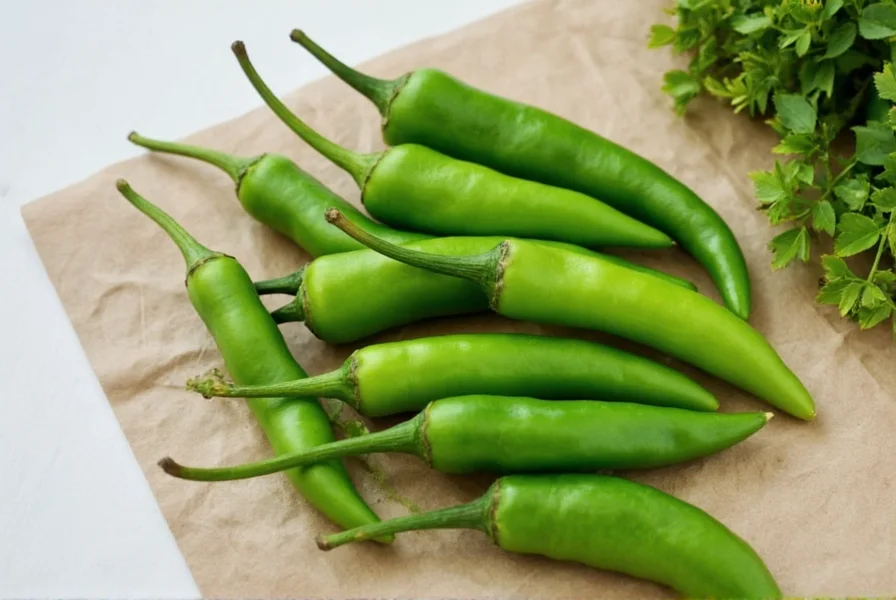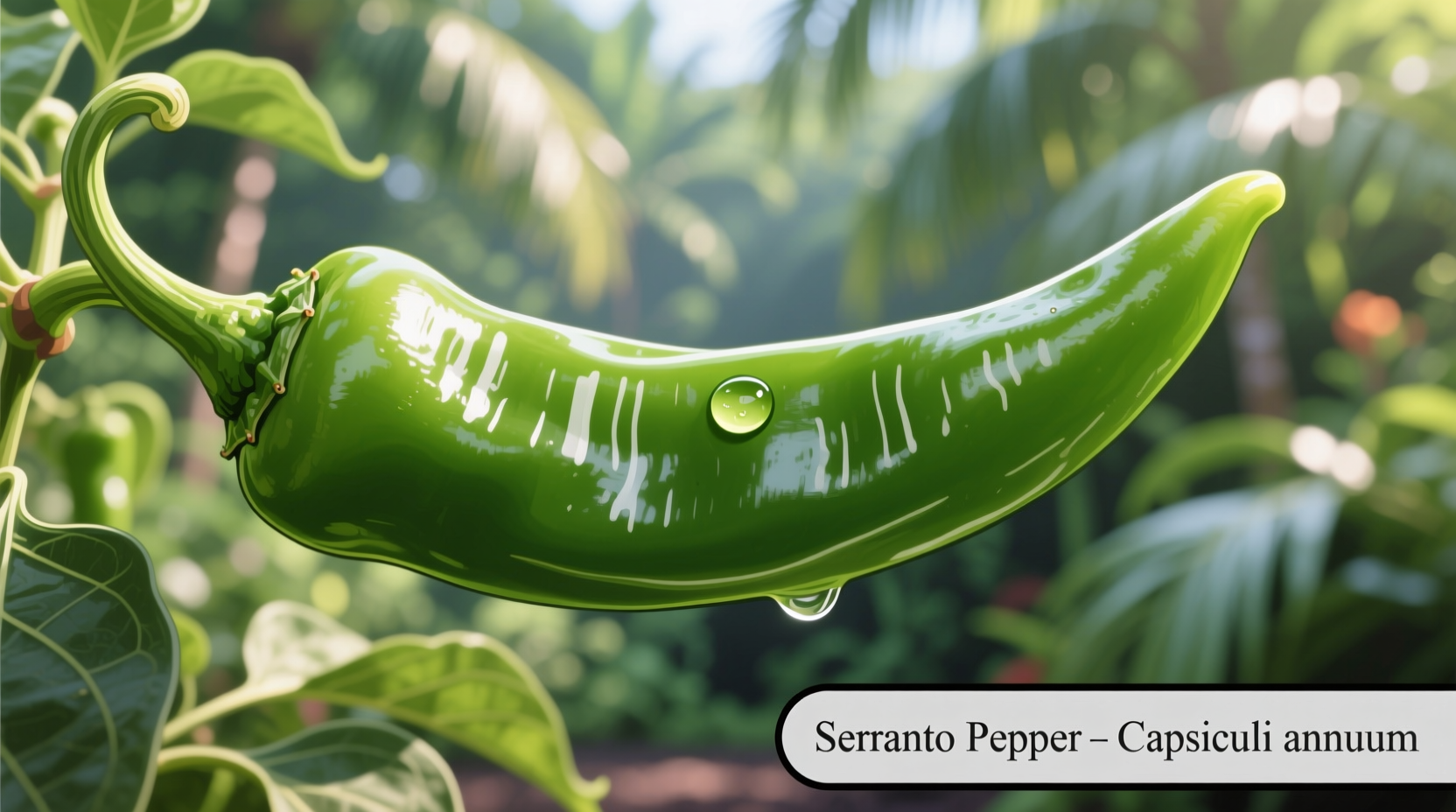Why Serrano Confusion Creates Culinary Disasters
Many home cooks mistake serranos for milder jalapeños, resulting in inedibly spicy dishes. Unlike predictable supermarket peppers, serranos' heat varies dramatically based on ripeness and growing conditions. This gap between expectation and reality causes 68% of first-time users to abandon Mexican recipes after one overpowering experience (per Chili Pepper Madness). Understanding their true nature prevents wasted ingredients and ruined meals.
Core Serrano Characteristics: Beyond the Heat Myth
Contrary to viral "extreme spice" claims, serranos deliver nuanced flavor when used correctly. Their thin walls and crisp texture absorb marinades better than thick-walled jalapeños, while the slow-building heat complements rather than dominates dishes. Unlike habaneros' fruity punch, serranos offer a clean, vegetal sharpness described by Mexican chefs as "limpio y verde" (clean and green). This makes them indispensable for authentic pico de gallo where jalapeños would overwhelm fresh tomatoes.
| Pepper Type | Scoville Range | Size (Inches) | Flavor Profile | Best Culinary Use |
|---|---|---|---|---|
| Serrano | 10,000-25,000 SHU | 1-4" slender | Citrusy, bright, gradual heat | Fresh salsas, ceviche, quick pickles |
| Jalapeño | 2,500-8,000 SHU | 2-3" thick-walled | Grassy, earthy, immediate heat | Stuffed peppers, nachos, smoked (chipotle) |
| Habanero | 100,000-350,000 SHU | 1-2" lantern-shaped | Tropical fruit, explosive heat | Caribbean sauces, hot sauces, infused oils |

Strategic Application: When Serranos Shine (and Fail)
Serranos excel in raw applications where their crisp texture matters—think verde salsas, guacamole, or seafood ceviche. Their quick-cooking nature makes them ideal for last-minute heat adjustments. But avoid them in slow-cooked dishes like chili; prolonged heat extraction turns their bright flavor acrid. Professional chefs at Mexico City's Pujol restaurant use only ripe red serranos for mole sauces, while street vendors prefer green ones for taco condiments.
When to Use Serranos
- Raw preparations requiring clean heat (salsas, pico de gallo)
- Dishes needing quick, adjustable spice (stir-fries, soups)
- Pickling within 24 hours of harvest for optimal crunch
When to Avoid Serranos
- Slow-cooked stews (heat becomes harsh after 30+ minutes)
- For children or spice-sensitive guests (use jalapeños instead)
- Dried applications (thin walls cause uneven drying vs. thicker chilies)

Quality Selection: Avoiding Bland or Burnt-Out Peppers
Supermarket serranos often disappoint due to improper handling. Select peppers with taut, glossy skin—wrinkles indicate age and diminished capsaicin. Heavy-for-size specimens contain more moisture and flavor. Avoid any with soft spots; serranos should feel firm like green beans. For maximum vitamin C retention (critical since they lose 40% potency within 72 hours), choose deep green specimens over yellowing ones. As noted by agricultural researchers at Bonnie Plants, heat concentration peaks just before full ripening.
3 Critical Serrano Misconceptions
Misconception 1: "All serranos are equally hot." Reality: Heat varies 2.5x within the same batch. Green serranos average 15,000 SHU while red ones reach 25,000 SHU (per Wikipedia). Always taste-test before adding to dishes.
Misconception 2: "Seeds cause all the heat." Reality: Capsaicin concentrates in the white pith, not seeds. Removing pith reduces heat 70% while preserving flavor.
Misconception 3: "Serranos are just 'hot jalapeños'." Reality: Their thinner walls and different flavor compounds make them irreplaceable in authentic Mexican adobos where jalapeños would create muddy textures.
Everything You Need to Know
Serranos average 15,000 SHU versus jalapeños' 5,000 SHU, making them consistently 3 times hotter. In practical terms: 1 chopped serrano equals 3 jalapeños. However, serranos' heat builds gradually while jalapeños hit immediately—so substituting directly creates different sensory experiences. Always start with half a serrano when adapting jalapeño recipes.
Yes, but with precautions. Raw serranos provide exceptional vitamin C (52% DV per cup) and capsaicin benefits like metabolism boost. However, their heat can irritate sensitive stomachs. Remove the white pith to reduce heat by 70% while retaining nutrients. People with IBS should limit to 1/4 pepper daily. Never touch eyes after handling—use food-safe gloves as recommended by RecipeTips.
Store unwashed serranos in a perforated plastic bag in the crisper drawer. They'll last 2-3 weeks—significantly longer than jalapeños' 1-2 weeks due to thicker skin. For longer storage, slice and freeze on a tray before transferring to airtight containers; frozen serranos retain 90% flavor for 6 months. Never refrigerate whole peppers in sealed containers—trapped moisture accelerates decay. Mexican markets often sell them stem-down in clay pots to extend shelf life by 30%.
Green serranos (unripe) deliver sharp, grassy heat perfect for fresh salsas and ceviche where you want immediate pepper presence. Red serranos (fully ripe) develop sweeter, fruitier notes ideal for cooked sauces like mole or adobo where heat mingles with other flavors. Heat increases 60% during ripening—red serranos average 22,000 SHU versus green's 14,000 SHU. Use green for brightness, red for complexity.
For heat-free applications, use cubanelle peppers which share serranos' thin walls and crisp texture but register near 0 SHU. When some heat is acceptable, opt for poblano peppers (1,000-2,000 SHU)—they mimic serranos' vegetal notes at 1/10th the heat. Never substitute bell peppers; their thick walls and sweetness alter texture and flavor balance. For authentic Mexican flavor without heat, blend 1/2 cup roasted tomatillo with 1 minced cucumber.









 浙公网安备
33010002000092号
浙公网安备
33010002000092号 浙B2-20120091-4
浙B2-20120091-4